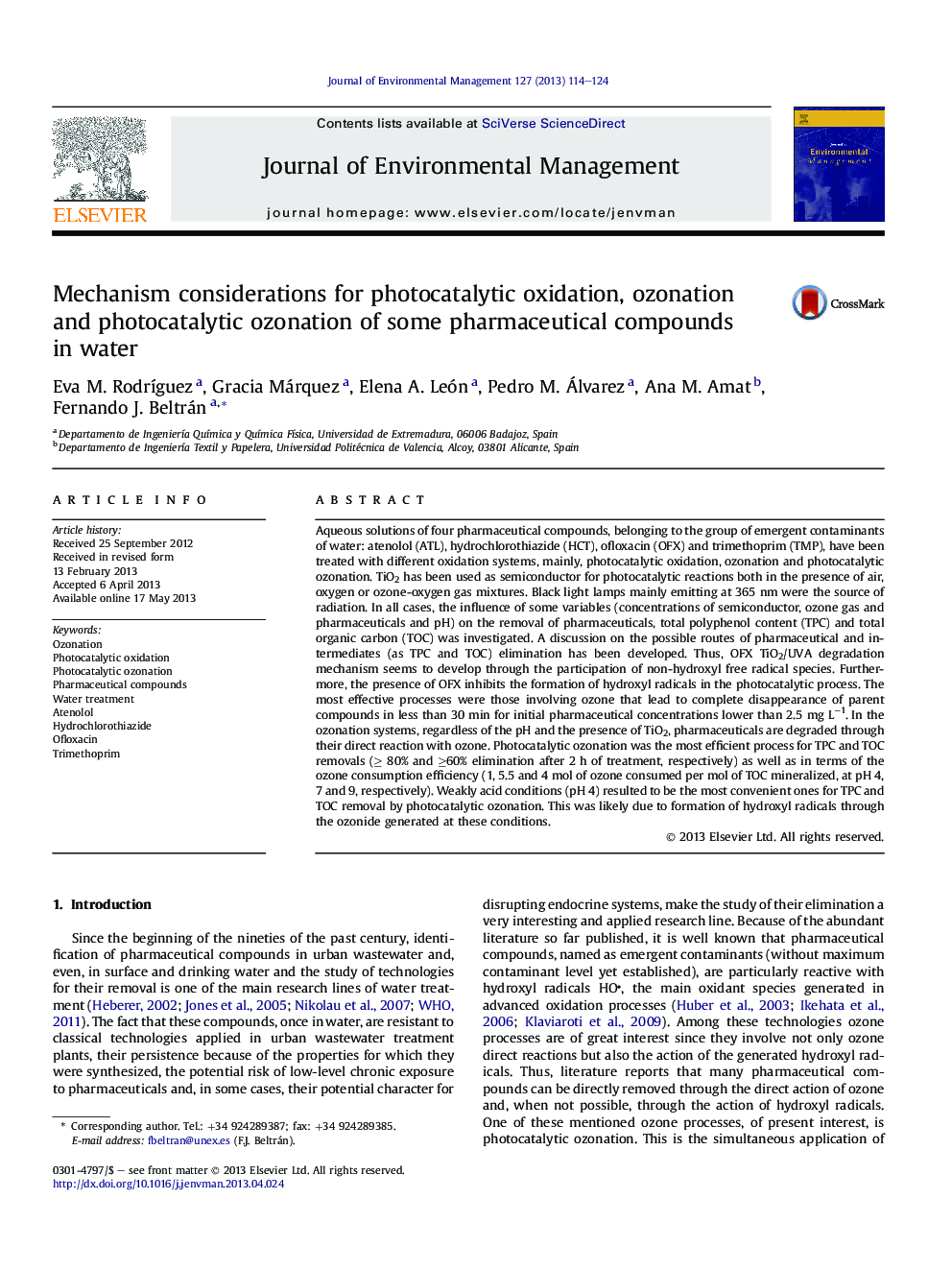| کد مقاله | کد نشریه | سال انتشار | مقاله انگلیسی | نسخه تمام متن |
|---|---|---|---|---|
| 1056013 | 1485285 | 2013 | 11 صفحه PDF | دانلود رایگان |

• Pharmaceuticals are treated with combinations of ozone, black light and TiO2.
• During TiO2 photocatalysis the presence of OFX seems to inhibit HO radical formation.
• In ozone processes, direct ozone reactions are the main responsible way of removal.
• For TOC elimination, photocatalytic ozonation presents a significant synergic effect.
• Photocatalytic ozonation allows minimum ozone consumption for mineralization.
Aqueous solutions of four pharmaceutical compounds, belonging to the group of emergent contaminants of water: atenolol (ATL), hydrochlorothiazide (HCT), ofloxacin (OFX) and trimethoprim (TMP), have been treated with different oxidation systems, mainly, photocatalytic oxidation, ozonation and photocatalytic ozonation. TiO2 has been used as semiconductor for photocatalytic reactions both in the presence of air, oxygen or ozone-oxygen gas mixtures. Black light lamps mainly emitting at 365 nm were the source of radiation. In all cases, the influence of some variables (concentrations of semiconductor, ozone gas and pharmaceuticals and pH) on the removal of pharmaceuticals, total polyphenol content (TPC) and total organic carbon (TOC) was investigated. A discussion on the possible routes of pharmaceutical and intermediates (as TPC and TOC) elimination has been developed. Thus, OFX TiO2/UVA degradation mechanism seems to develop through the participation of non-hydroxyl free radical species. Furthermore, the presence of OFX inhibits the formation of hydroxyl radicals in the photocatalytic process. The most effective processes were those involving ozone that lead to complete disappearance of parent compounds in less than 30 min for initial pharmaceutical concentrations lower than 2.5 mg L−1. In the ozonation systems, regardless of the pH and the presence of TiO2, pharmaceuticals are degraded through their direct reaction with ozone. Photocatalytic ozonation was the most efficient process for TPC and TOC removals (≥ 80% and ≥60% elimination after 2 h of treatment, respectively) as well as in terms of the ozone consumption efficiency (1, 5.5 and 4 mol of ozone consumed per mol of TOC mineralized, at pH 4, 7 and 9, respectively). Weakly acid conditions (pH 4) resulted to be the most convenient ones for TPC and TOC removal by photocatalytic ozonation. This was likely due to formation of hydroxyl radicals through the ozonide generated at these conditions.
Figure optionsDownload as PowerPoint slide
Journal: Journal of Environmental Management - Volume 127, 30 September 2013, Pages 114–124